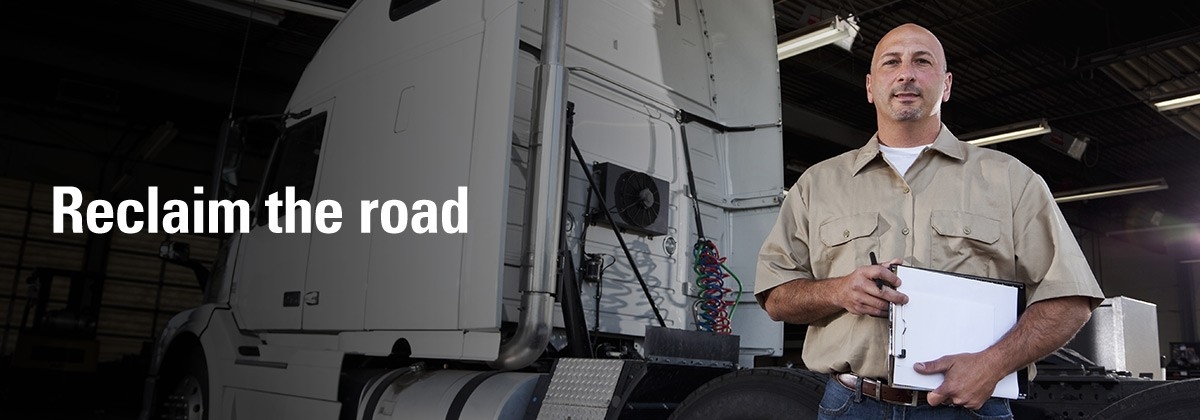There was a time, not too long ago, that larger size fleets had a stronger advantage over smaller ones. The latter just couldn’t compete at the same level. Yet, like most things, times have changed and so has the competitive advantage of large-sized fleets. Smaller fleets are starting to catch up and making it harder for larger fleets to maintain their competitive advantage.
While this is good news for the smaller fleets, it can be a challenge for larger fleets as they look towards the future. This makes the market more competitive. Before this, larger fleets only had to worry about competing with other companies of similar size, but now they have to worry about fleets of all sizes.
The numbers prove that smaller fleets continue to gain momentum, even when you look at the new driver hires. For example, “between 2012-2018, 322k joined fleets with fewer than 100 trucks, 225k joined fleets with fewer than 20 trucks and only 155k joined fleets with more than 500 power units.” Then, take a look at the number of registered carriers, “small fleets with 7-19 trucks” had a “40% increase” from 2012 to 2018. “Very small fleets with fewer than 7 trucks” had a “72% increase” over this time frame and owner-operated fleets had a “20% increase.” These numbers show that smaller fleets are having expansive growth, which means larger fleets need to take notice now.
What is happening? Tools that used to be more available for larger fleets are now becoming available for these smaller-sized fleets. They are able to use resources that help them save money and miles. Tools like Truckstop.com can help them operate more efficiently. They also access technological innovations to help them find better routes. Also, other factors like the condition of the fleet enter the equation. “The active Class 8 population is getting younger.” It’s true. In 2010, the average truck age was about 6.70. In 2018, it was 6. And in 2019, it dropped a little below 6. In 2022, it’s projected to be about 5.50.
With this increased competition, how are bigger commercial fleets supposed to keep up? Well, there are a number of ways to reduce costs overall and increase competitive advantage. Here’s the thing, by increasing your fuel economy you not only benefit the environment, but you can maximize cost savings. It’s a win-win overall for a company looking to stay competitive.
There are several ways to achieve the goal of improved fuel economy. Of course, driving a little slower can provide you with more fuel efficiency. But, there are also another set of options to consider. To get started, here is a list of updates to consider from Chevron:
Low-rolling resistance tires: Drive/trailer
Low-rolling resistance tires: Steer
Aerodynamic mud flaps
Trailer tail
Aerodynamic wheel covers
Fuel-efficient engine lubricants’
Trailer skirts
These options can help you save on fuel economy. For example, you could benefit from a 3% increase in fuel economy on low rolling resistance tires: Driver/trailer, which equates to “$1,833 cost per % increase.” However, that’s a “$5,500 cost per truck per year.” Take a look at this list from Chevron to see more number estimates of how much each item could potentially cost and save you as you decide what options you might adopt.
But, as you consider these options, you don’t want to miss an easy change that your company can adopt. This one relates to the type of engine oil used. Chevron recommends this move the most, because of its lower cost and simplicity for fleets. This can make a noticeable difference and it’s a simple change to adopt. Yet, so many company’s miss this obvious solution. Don’t be one of them. Get the most out of your fuel economy.
This simple change can help you stay competitive in an industry that continues to show more competition. Small and medium fleet growth doesn’t seem to be slowing down, which is why it’s important to start adopting new solutions now to stay in the game.
You don’t want to choose just any engine oil for your fleet. You want one that helps you get the most bang for your buck, one that works for you. Chevron offers Delo 400 ZFA SAE 10W-30 oil. Its purpose is to boost fuel economy. They’ve also “removed the need for two oils – along with all the risk – for mixed fleets.” If you want to learn more about making this switch, you can request Chevron’s “14 steps to switching your fleet to Delo 400 ZFA” article from their website.
At Greg’s Petro, we are proud to supply advanced Chevron branded fuels and lubricants. Through Chevron, Greg’s Petroleum Service is a supplier of California reformulated gasoline and Ultra Low Sulfur diesel #2. Both of these are newer, cleaner burning fuels and meet American and more stringent Californian standards intended to improve air quality. It’s important to us to supply advanced petroleum products and for our customers to know they can rely on us. If you’re looking for commercial fuel delivery in the San Joaquin Valley area, please contact us. We’re here for you and your fuel needs.
